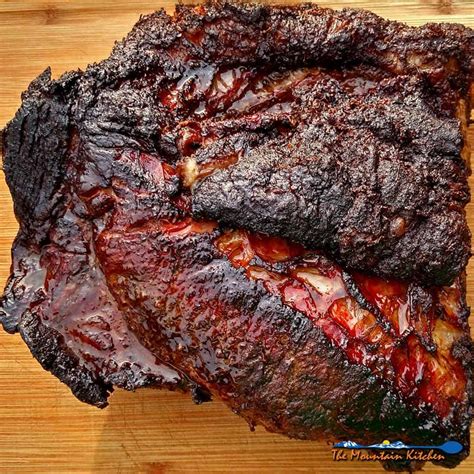How To Smoke a Beef Brisket: A Comprehensive Guide
Smoking a beef brisket is a labor of love, resulting in incredibly tender, juicy, and flavorful meat. This comprehensive guide will walk you through every step, from selecting the right brisket to achieving that perfect bark and melt-in-your-mouth texture. Get ready to impress your friends and family with your BBQ skills!
Choosing Your Brisket
The foundation of a great smoked brisket starts with selecting the right cut. Look for a brisket with a good fat cap – this renders down during the smoking process, keeping the meat moist and flavorful. A heavier brisket (12-15 pounds) will generally yield more tender results, but a smaller one works fine if you're cooking for fewer people.
Key Considerations:
- Fat Cap: Aim for a thick, even fat cap. This is crucial for moisture and flavor.
- Marbling: While not as critical as the fat cap, marbling (intra-muscular fat) adds tenderness and flavor.
- Weight: Consider the number of servings you need when selecting the weight of your brisket.
Preparing the Brisket
Before you even think about lighting your smoker, proper preparation is key.
Trimming the Fat Cap:
- Don't remove all the fat! A good layer of fat (about ¼ inch) is essential. Trim away any excess fat, especially thicker sections that won't render properly. You can leave some thicker sections around the edges for added flavor.
Seasoning the Brisket:
- Keep it simple: A basic dry rub is often best. A combination of salt, black pepper, garlic powder, onion powder, and paprika works wonderfully. Feel free to experiment with other spices to your liking.
- Apply generously: Rub the seasoning all over the brisket, ensuring full coverage.
Smoking the Brisket: The Low and Slow Method
Smoking a brisket is all about low and slow cooking. This allows the collagen to break down, resulting in incredibly tender meat.
Temperature and Time:
- Target Temperature: Maintain a consistent temperature of 225-250°F (107-121°C) in your smoker.
- Time: Expect to smoke a brisket for 12-18 hours, or even longer, depending on the size and your smoker. Use a meat thermometer to check for doneness, not just time.
Monitoring the Brisket:
- Wrap it (optional): Many smokers "wrap" their brisket in butcher paper or aluminum foil around the 12-hour mark. This helps retain moisture and speed up the cooking process. However, unwrapping towards the end is necessary to develop a nice bark.
- Check the internal temperature: Use a reliable meat thermometer to monitor the internal temperature. The brisket is done when it reaches an internal temperature of 200-205°F (93-96°C).
The Stall:
- Don't panic! You might experience a "stall" where the internal temperature stops rising for a period. This is normal. Just continue smoking at the consistent temperature, and the temperature will eventually start rising again.
Resting and Slicing the Brisket
Once the brisket reaches the desired internal temperature, the work isn't quite over yet. Resting is crucial for developing maximum tenderness.
Resting:
- Wrap in foil: Wrap the brisket tightly in foil and let it rest for at least 1-2 hours. This allows the juices to redistribute throughout the meat.
Slicing:
- Against the grain: Slice the brisket against the grain for maximum tenderness. This means slicing perpendicular to the muscle fibers.
Troubleshooting
- Dry Brisket: If your brisket is dry, you likely didn't have enough fat or didn't maintain a consistent low temperature.
- Tough Brisket: If your brisket is tough, you might not have smoked it long enough or at a low enough temperature.
Conclusion
Smoking a brisket is a rewarding experience. While it takes time and patience, the results are well worth the effort. Follow these steps, practice your technique, and enjoy the delicious fruits of your labor! Remember, every smoker and brisket is slightly different, so don't be afraid to experiment and find what works best for you. Happy smoking!
